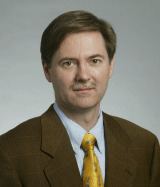Nationality Canada Name Campbell Harvey | ||
 | ||
Born June 23, 1958 (age 67) ( 1958-06-23 ) Alma mater University of ChicagoUniversity of Toronto Influences Eugene FamaMerton Miller Contributions Time-varying Risk Premia, Emerging Markets Finance Awards James R Vertin Award from CFA Institute, 2007; Graham and Dodd Award from CFA Institute, 2007; Jensen Prize from Journal of Financial Economics, 2006 and 2002; and Batterymarch Fellowship, 1993-1994 Influenced by | ||
Campbell Harvey ~ Nexixen Economics
Campbell Russell “Cam” Harvey (born June 23, 1958) is a Canadian economist, known for his work on asset allocation with changing risk and risk premiums and emerging markets finance. He is currently the J. Paul Sticht Professor of International Business at Duke University’s Fuqua School of Business in Durham, NC, as well as a research associate with the National Bureau of Economic Research in Cambridge, MA. He is also a research associate with the Institute of International Integration Studies at Trinity College in Dublin and a visiting researcher at University of Oxford.
Contents
- Campbell Harvey Nexixen Economics
- Campbell Harvey on Blockchain
- Career
- Time varying risk and risk premia
- Emerging markets finance
- Survey work in finance
- Risk management
- Awards
- Editorships
- Financial GlossaryBlog
- Personal life
- References
Campbell Harvey on Blockchain
Career
He earned his undergraduate degree in economics and political science from Trinity College at the University of Toronto in 1981 and his MBA from York University in Toronto in 1983. His doctoral work was carried out at the Booth School of Business at the University of Chicago. His doctoral supervisors were Eugene Fama, Merton Miller, Robert Stambaugh, Wayne Ferson, Shmuel Kandel, and Lars Hansen.
His Ph.D. thesis explored the concept that the term structure of interest rates (difference between long-term interest rates and short-term rates) could predict the US business cycle. His thesis was published in the Journal of Financial Economics in 1988. That work was subsequently expanded and published in the Financial Analysts Journal in 1989.
Time-varying risk and risk premia
Harvey’s thesis showed that information in the term structure of interest rates was linked to future growth of the economy. When short-term rates were higher than long-term rates (an inverted yield curve), recessions followed. In the time since his thesis was published, the yield curve has inverted three times—in 1989, 2000, and 2006—correctly predicting the three recessions of 1990–1991, 2001, and 2007–2009.
Given the idea that the business cycle is to some degree predictable, Harvey argued in his 1991 paper with Wayne Ferson in the Journal of Political Economy that both risk exposures and risk premia should vary predictably through the business cycle. Harvey’s research in both the 1989 Journal of Financial Economics and in the 1991 Journal of Finance documented the predictability of asset returns.
Emerging markets finance
Harvey was one of the early finance researchers to study emerging markets' equity and bond returns. His 1995 paper in the Review of Financial Studies showed that the standard approaches in finance in developed markets could not be applied to many developing countries. His 1995 Journal of Finance paper with Geert Bekaert proposed a way of dealing with the special challenges of emerging markets.
In multiple research papers authored with Bekaert, Harvey studies the relationship between the real economy and finance. His 2005 paper with Bekaert and Christian Lundblad shows opening financial markets to foreign investors reduces the cost of financing while increasing investment and GDP for developing countries.
Survey work in finance
Harvey is the founding director of the Duke University/CFO Magazine Global Business Outlook Survey. In work with John Graham, he linked the theory and practice of finance. That is, many research papers make assumptions about how managers behave. Harvey’s research asks the managers directly about these assumptions. The survey has been conducted every quarter since 1996 and has generated numerous research papers, including a paper published in the Journal of Financial Economics in 2001 that has been cited 521 times as of July 2013, according to http://webofknowledge.com.
Risk management
Harvey has been a strong proponent of modifying the view of risk. Much risk modeling focuses on volatility or standard deviation. In his 2000 paper in the Journal of Finance with Siddique, Harvey presents a two-part argument in favor of incorporating skewness. First, asset returns are not normally distributed. Second, investors like positive skew (big profits) and dislike negative skew (big losses); Harvey argues these preferences need to be taken into account in both portfolio management and risk management. Harvey also asserts estimates are imprecise and this uncertainty needs to be taken into account when making investment decisions.
Awards
Bernstein Fabozzi/Jacobs Levy Awards 2015 and 2016; James R. Vertin Award 2007 from CFA Institute,; Graham and Dodd Award 2013 from CFA Institute,; Jensen Prize 2001 and 2005 from Journal of Financial Economics,; and Batterymarch Fellowship, 1993-1994.
Editorships
Harvey served as editor of the Journal of Finance, a position he held for the 2006–2012 term. Previously, he served as an editor of the Review of Financial Studies from 1999–2005.
Financial Glossary/Blog
Harvey is the author of Harvey’s Financial Glossary which contains over 8,000 definitions and 18,000 hyperlinks. His hypertextual financial glossary is used by The New York Times, Reuters, The Washington Post, CNNMoney, Yahoo and many other sites. He recently launched both iPhone and iPad versions of the glossary. Harvey is also the author of the blog Gardenofecon.com.
Personal life
Harvey lives in Chapel Hill, NC and has three children, Cassandra (b. 1992), Catriona (b. 1995) and Campbell II (b. 1997). In his spare time, he plays piano.
